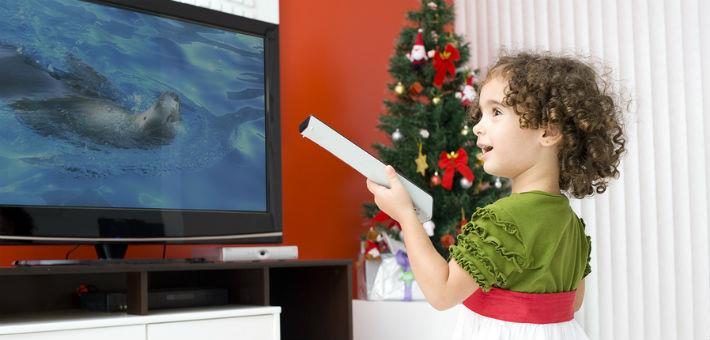
Watching TV Stimulates Preschoolers' Requests to Father Christmas
Watching television still plays an important role in children’s lives. Advertisers use television to target kids, especially during the Christmas season. And with good reason, this study shows. The study published in 2002 in the International Journal of Behavioral Development reveals that the more television preschoolers watch, the more presents they ask for Christmas. The number of Christmas wishes is even higher for children who watch more commercial TV.
Take aways
- The more television children watch, the more presents they ask for Christmas.
- Children who watch more commercial TV, also ask for more Christmas gifts.
- However, although preschoolers ask for more gifts, they do not necessarily ask for the most heavily advertised products. Only 10% of the toys advertised featured in the children’s wish lists.
- This suggests that brand recall is poor in young children. A study among school-aged children yielded a much higher percentage of requests for advertised brands.
Study information
The question?
What is the influence of television viewing and advertising on preschoolers' requests to Father Christmas?
Who?
83 4-to 6-year olds from British primary schools (mean age is 5), 16 3-to 4-year olds from a British nursery school (mean age is 4), and 19 6-year olds from a Swedish kindergarten (mean age is 6)
Where?
United Kingdom & Sweden
How?
Teachers in Britain and Sweden asked children to write a letter to Father Christmas with their gift wishes. Afterwards researchers assessed how often the children watched television. The Swedish children were only asked to write their Christmas wish list. Because Sweden is a country were advertising to children is not permitted, the researchers were able to compare this group of children with the British children. In addition, the researchers also recorded child programs from commercial television channels in the run-up to Christmas (October 23 to November 28, 1999) to test a possible relation between advertised items and requests for these items.
Facts and findings
- Children’s wish lists contained three items, on average.
- About one-third of the wishes mentioned a brand name.
- The more television children watched, the more items (both branded and non-branded) they requested
- Children who watched more commercial TV, also requested more items
- Toys that were heavily advertised on television in the period leading up to Christmas were not requested more often. This means that, although children who watched more commercial TV asked for more toys, they didn’t specifically asked for the toys they saw advertised on TV.
- The British children requested more items than the Swedish children did. A reason could be the Swedish restrictions on child-directed advertising.
- Children who watched television mostly alone or with a sibling requested more branded toys than children who watched TV mostly with an adult. In other words, young children may be less resistant to advertising messages when they are watching alone.